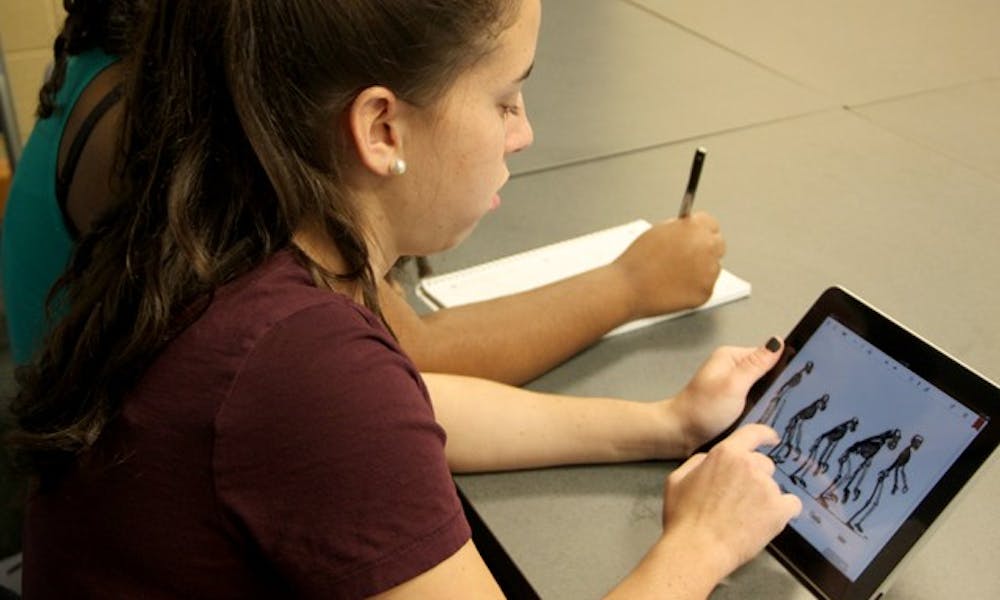Students who once thought their iPads were only useful for Angry Birds can now use their tablets for homework.
Duke is one of the first universities to utilize Apple’s new iTunes U application, which allows users to take courses through their iPad, iPhone and iPod touch devices. Apple originally launched the iTunes U program in 2007, but with the release of the new application this year, students can access entire sets of course material, including course lectures, instructor posts and PDF documents. Duke joins institutions such as Stanford University, Yale University, the Massachusetts Institute of Technology and Oxford University, and is currently offering one course on the application, Chemistry 43: Core Concepts in Context.
“My colleagues and I wanted to pull together multimedia resources that would allow us to replace the traditional chemistry lecture and use class time for more interactive, problem-centered exercises,” Stephen Craig, professor of chemistry and associate professor of Center for Biomolecular and Tissue Engineering, wrote in an email Monday.
Duke first utilized the previous version of iTunes U in 2007, which was an outgrowth of Duke’s 2004 initiative to distribute iPods to each member of the freshman class.
Most of the course resources for Chemistry 43 are provided free of charge, and in order to access the material, a student must download the application from the iTunes application store and then download the specific content.
Craig’s iTunes U chemistry collection is made up of more than 600 lectures, documents and captured whiteboard animations, Cara Bonnett, Office of Information Technology managing editor, wrote in an email Monday. Bonnett added that the application provides a quality alternative to a traditional textbook because the materials are able to be modified.
“We worked with Apple to make the open chemistry course available on the new platform because we want to make our open access materials available in as many ways and on as many platforms as possible,” Bonnett said.
The resources on the iTunes U application are targeted for a variety of uses, such as reviewing concepts or actually learning the material.
“In my course, they were the starting point that students used to get familiar with the material prior to class time,” Craig said.
Some Duke students find the new application a useful resource, while others note the drawbacks of publishing easily accessible lecture material.
“If you missed something in the fast-paced lectures, then you can go back and see what you missed,” said freshman Alexa Frink, who is familiar with Duke’s iTunes U resources. “I don’t personally think that I would skip class and just listen to [the iTunes lecture], but I think a lot of people would do that.”
Duke does not grant academic credit to students who choose to learn the information on their own through the iTunes application but are not currently enrolled in Chemistry 43, Bonnett noted.
She said that depending on the success of the Chemistry 43 application, materials for more courses may be released.
“Planning a team-based learning curriculum and sourcing and developing materials takes a great deal of time the first time,” Bonnett said. “Based on our evaluation, we may adapt the course design and materials for use by other faculty and across other courses.”
Bonnett was unable to provide the specific cost of Duke’s participation in iTunes U, but noted that funding was provided by OIT, the Center for Instructional Technology, the Duke Digital Initiative and the Office of the Provost. Participation in this program reflects the University’s goal to utilize new forms of technology for students and professors, she said.
Get The Chronicle straight to your inbox
Signup for our weekly newsletter. Cancel at any time.

